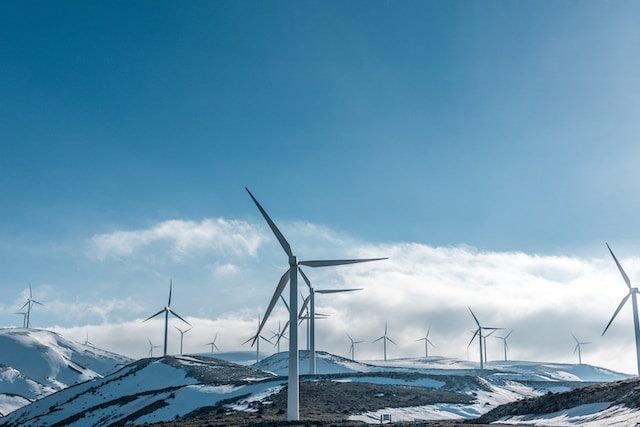
Welcome to our blog post on vertical turbines and their role as a renewable energy solution for combating climate change. As our planet continues to warm, finding sustainable sources of energy is crucial for reducing greenhouse gas emissions and mitigating the effects of global warming. In this post, we will explore how vertical turbines work, their advantages, and why they are a promising option for a cleaner, greener future.
What are Vertical Turbines?
Vertical turbines, also known as vertical-axis wind turbines (VAWTs), differ from traditional horizontal-axis wind turbines (HAWTs) in their design and functionality. While HAWTs have a propeller-like structure that rotates on a horizontal axis, VAWTs have blades that rotate around a vertical axis.
The vertical axis allows VAWTs to capture wind from any direction, making them more adaptable to various wind patterns. They can also operate in areas where wind direction and strength may vary, making them suitable for both urban and rural environments.
Advantages of Vertical Turbines
1. Accessibility: Vertical turbines can be easily installed in urban areas, where space may be limited. They take advantage of the vertical space available and have a smaller footprint compared to traditional wind turbines.
2. Lower Wind Speed Requirement: VAWTs can harness wind energy at lower wind speeds compared to HAWTs. This means they can generate electricity in locations where wind speeds are generally lower, expanding the range of potential installation sites.
3. Safety: Due to their design, vertical turbines are safer for birds and other wildlife. Unlike HAWTs that have exposed rotating blades, VAWTs have a more enclosed design, reducing the risk of bird collisions.
4. Aesthetics: Vertical turbines have a unique and visually appealing design that can complement modern architecture. They can be seen as works of art while at the same time generating clean energy.
Vertical Turbines and Climate Change
As concerns over climate change continue to grow, it is essential to shift away from fossil fuels towards renewable energy sources. Vertical turbines play a significant role in promoting sustainability and combating climate change.
1. Reduced Carbon Emissions: Vertical turbines produce electricity without burning fossil fuels, thereby reducing greenhouse gas emissions. This helps to mitigate climate change by reducing the amount of carbon dioxide released into the atmosphere.
2. Energy Independence: By harnessing wind energy, vertical turbines contribute to a more decentralized energy system. Local communities and homeowners can generate their own electricity, reducing their dependence on centralized power grids and fossil fuel-derived electricity.
The Future of Vertical Turbines
As vertical turbines continue to evolve, advancements in technology, materials, and design will improve their efficiency and reduce costs. Ongoing research and development aim to make vertical turbines an even more viable renewable energy option.
1. Vertical Turbines in Urban Areas: The compact design of vertical turbines makes them ideal for urban areas. As cities strive to become more sustainable, vertical turbines can play a crucial role in meeting their renewable energy goals.
2. Integration with Other Renewables: Vertical turbines can be used in conjunction with other renewable energy sources such as solar power. This hybrid approach ensures consistent energy production, even when wind or sunlight alone is insufficient.
Conclusion
Vertical turbines offer a promising solution to combat climate change and transition to a cleaner, greener future. With their ability to generate electricity in urban environments, adaptability to various wind conditions, and minimal impact on wildlife, vertical turbines are a valuable renewable energy option. By embracing sustainable technologies like vertical turbines, we can reduce our carbon footprint and create a more resilient planet for future generations.
Thank you for reading our blog post! We hope you found it informative and inspiring. If you have any questions or comments, feel free to reach out to us.
